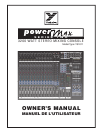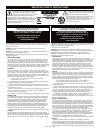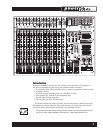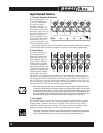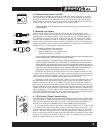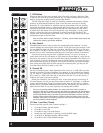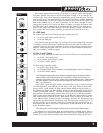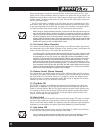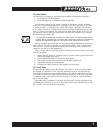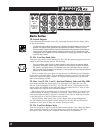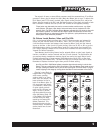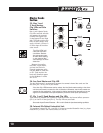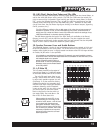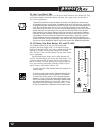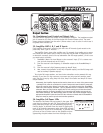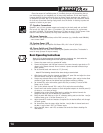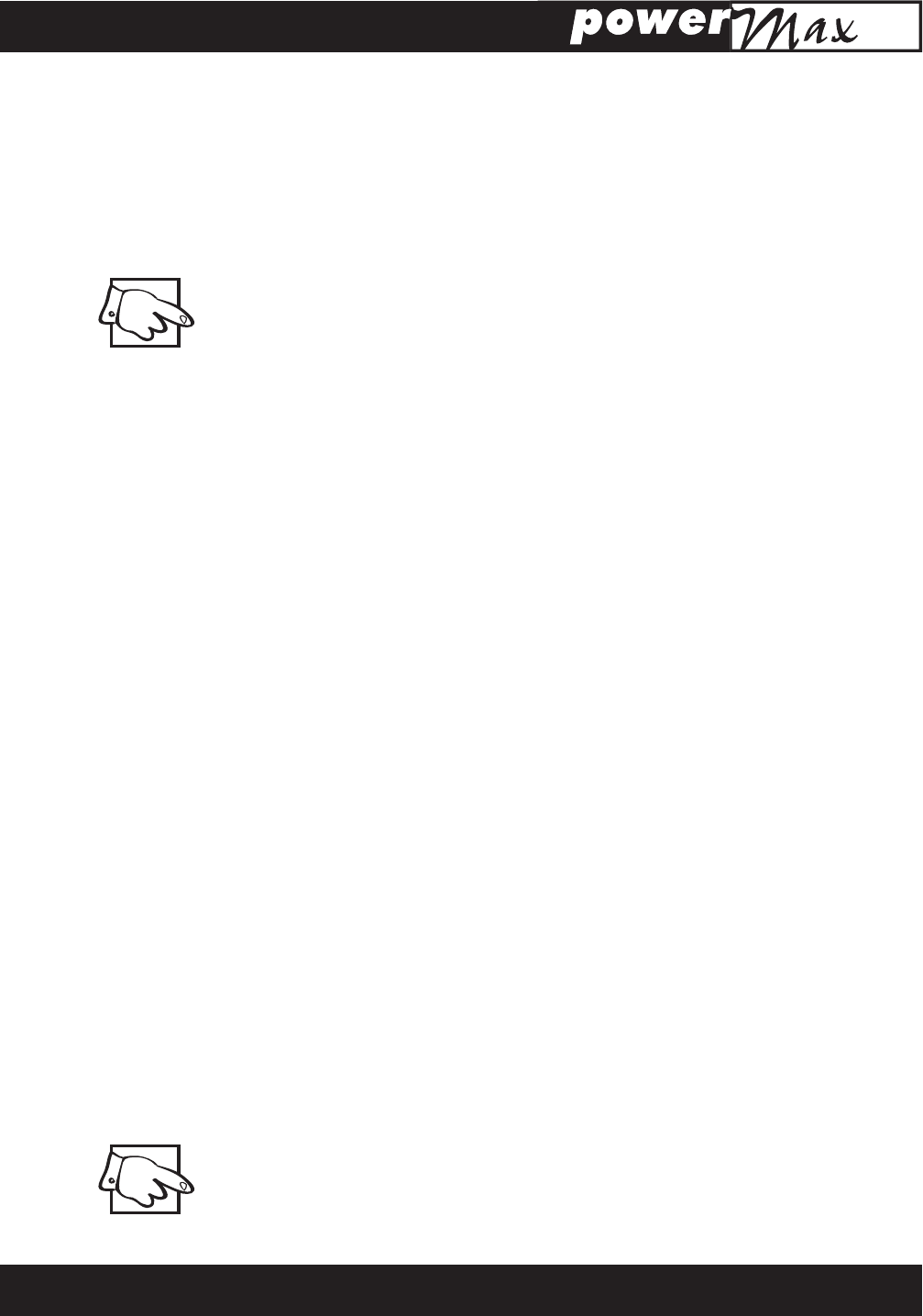
6
Select and Parameter controls for the desired effect in the same manner as Efx 1, then
adjust the Efx 2 Send and Return masters to blend in the effect with the dry signals. Use
headphones and the Mon 1 and/or Mon 2 Solo buttons to listen to the effects mix in the
monitor system. The Monitor Solo works the same with the AFL (After-Fader-Listen) and
the PFL (Pre-Fader-Listen).
The Efx 2 send signal is available at the Efx 2 Send jack and is regulated by the Efx 2
Send master fader. You may connect external effects between the Send and Return jacks,
or you may alternately use the Send jack to supply mono recording or broadcast signals
not requiring effects (like the Aux signal, Efx 2 is dry and post-channel fader).
When using an external effects processor, connect the Efx Send jack to the input of
the unit and the Efx Return jacks to its outputs. It is possible to use both an external
effect unit and the internal unit if the external returns are connected to one stereo or
two mono channels. If it's not a stereo effect, connect its output using a ‘Y’ cable to
both the L&R Efx 2 Return jacks. The effect processor’s output may be cued through
headphones with the Efx 2 Solo button depressed and the Solo Mode button in PFL
position. AFL gives you Efx 2 to Main Return level.
13. Pan Control (Mono Channels)
This controls the post-fader channel signal routing to the L&R main faders. Signal levels
are compensated at the L&R rotation extremes so that panning during a performance will
result in minimal SPL losses in the center-field audience areas.
In a stereo setup, the Pan controls would normally be set at, or near, center so audi-
ence members on both sides can hear everything properly. However if stereo is not
an essential part of your P.A. sound, you might opt to convert PowerMAX to mono
operation. To accomplish this, simply patch the L/Mono (left main/mono) Line Level
Output into both the Amp A and Amp B Amplifier Inputs with a standard “Y” cable.
Now, both main power amps are receiving a mono mix. This will enable you to use
the Pan controls to set up two submaster groups – for example you could pan all the
drum channels left and all the rest right. Now the L&R master faders become group
masters. These master faders are placed close together, so it is easy to move them
both at once when making main system level changes.
14. Balance Control (Stereo Channels)
This controls both the channel output routing to the L&R main faders and the compara-
tive levels of the stereo signals within the channel. If you have patched for mono opera-
tion (see number 13. Pan control, above) it is possible to connect two different mono
line-level sources to a stereo channel and use the Bal control to regulate their relative
volumes. For more on this, see under Bal Line Inputs.
15. Clip/Mute LED
The Clip LED is triggered at 6 dB below the channel’s actual clipping level. When the
Mute button is depressed, the Clip light will illuminate at half–brightness and will still
flicker to indicate clipping. With the Clip light threshold set below actual clipping level,
it is possible to allow a certain amount of light activity without worrying about distor-
tion. As a result, you may use the Clip light to help you adjust the Gain control. See
under 8. Gain Control for more about this.
16. Mute Switch
The Mute switch shuts off the specific channel and all sends except PFL. Mute is a timesav-
ing feature that enables you to put channels, which you have adjusted during the sound
check, on hold until they're needed. It's important to do this since every open microphone
connected to a mixer reduces the system’s gain before feedback (by several decibels).
17. Solo Active LED
This LED flashes with channel activity and stays illuminated to indicate Solo activation.
It will still pulse slightly with channel activity in Solo mode.
Just a reminder to take channels off Solo when you are through listening to them
through the headphones and/or checking their audio level on the VU-Meter.



